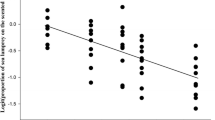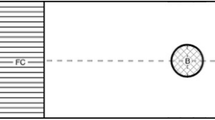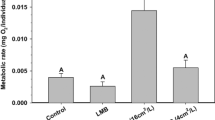Abstract.
The green sea urchin, Strongylocentrotus droebachiensis, exhibited immediate behavioural responses to waterborne chemosensory cues from two durophagous predators, the Atlantic wolffish, Anarhichas lupus, and the edible crab, Cancer pagurus; as well as from crushed conspecifics and crushed blue mussels, Mytilus edulis. The response patterns were dose dependent and diet dependent. Strong responses were elicited by water conditioned by echinivorous wolffish (97.5%), undiluted urchin extract (73%), undiluted mussel extract (52.5%), and by water conditioned by echinivorous crab (45%). In contrast, urchin extract diluted to 1%, mussel extract diluted to 10%, and water conditioned by predators on a mussel diet elicited weak responses (~20%). Infection by the endoparasitic nematode Echinomermella matsi had no significant effect on the response pattern of S. droebachiensis. There was no conclusive evidence of an alarm response to the predators per se, as the weak response to stimuli from non-echinivorous wolffish and crab, as well as from the seastar Asterias rubens, may have been caused by chemical cues transmitted from their mussel diet. The diet-dependent response to predators suggests that active predators were labelled by chemical cues from their echinoid prey. The chemical cue from echinivorous wolffish acted as both an arrestant and as a repellent, whereas the response to other cues was predominantly or exclusively repellent. The response to echinivorous wolffish was quantitatively stronger than, and qualitatively different from, the response to other stimuli, including undiluted urchin extract. The wolffish is apparently being labelled by a latent chemical cue which derives its potency from activation by, or interaction with, substances in the digestive system of the wolffish. We interpret this novel phenomenon as evidence of alarm signal magnification. The induced behavioural modifications demonstrate the green sea urchins' ability to detect chemical cues associated with active durophagous predators, and would therefore seem to have adaptive potential as a predator defence mechanism.
Similar content being viewed by others
Author information
Authors and Affiliations
Additional information
Electronic Publication
Rights and permissions
About this article
Cite this article
Hagen, .N., Andersen, .Å. & Stabell, .O. Alarm responses of the green sea urchin, Strongylocentrotus droebachiensis, induced by chemically labelled durophagous predators and simulated acts of predation. Marine Biology 140, 365–374 (2002). https://doi.org/10.1007/s002270100694
Received:
Accepted:
Issue Date:
DOI: https://doi.org/10.1007/s002270100694




